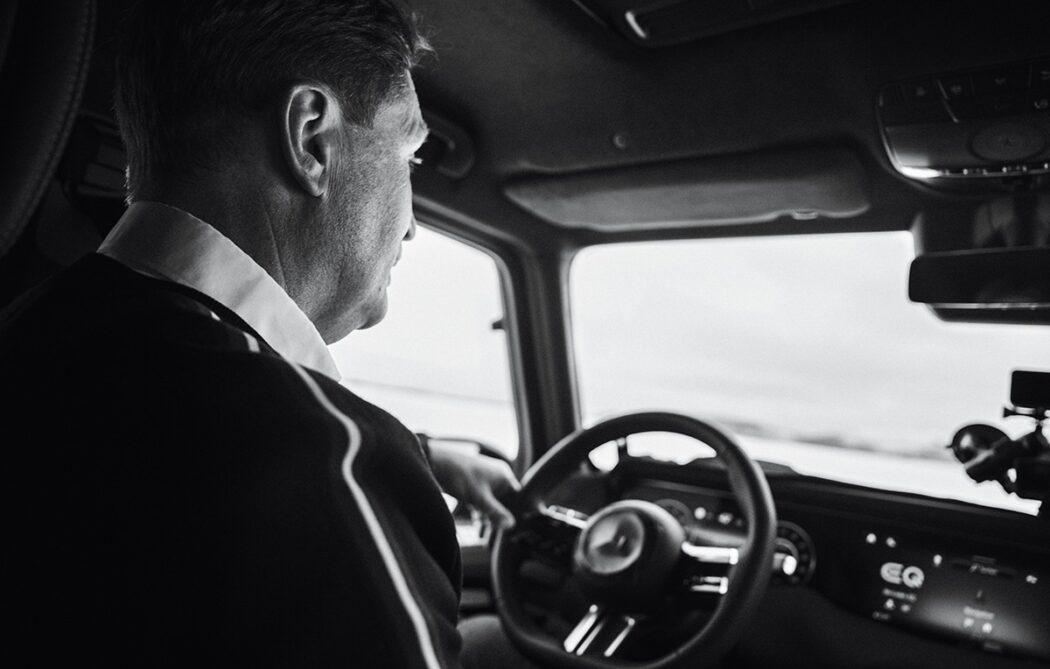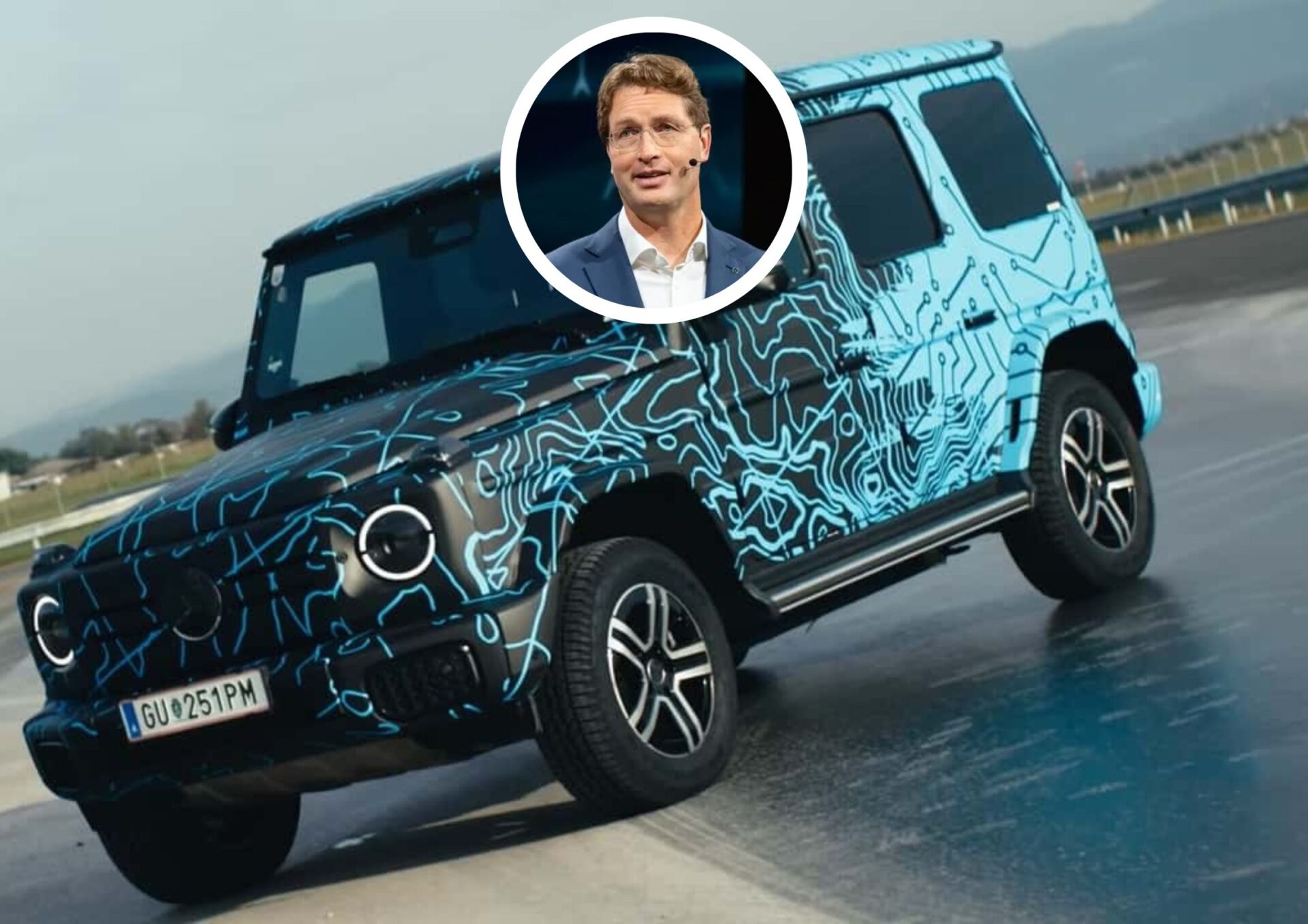Ola Källenius finds himself in a frigid workshop situated just south of the Arctic Circle in Sweden. He is observing a disguised prototype of the new electric G-Class SUV, which has just returned from high-speed, low-traction tests on frozen lakes in the vicinity. As the vehicle is hoisted into the air on a hydraulic lift, meltwater drips onto the concrete floor. The CEO of the Mercedes-Benz Group enjoys his lunch—a premade sandwich and a carton of juice—while conversing in fluent German with the mostly Austrian engineers who dedicate months to ensure the company’s new models can withstand conditions few customers will ever encounter. They discuss the vehicle’s performance on icy surfaces and the progress of its testing regimen. Källenius praises the car’s dynamics, noting how stable it felt at high speeds, and inquires about the engineers’ time in the harsh locale.
“There are some harsh realities to this job and the car industry,” Källenius later shares. “But I love this: spending time with our designers, driving on an ice lake in Sweden, or conversing with these engineers. I wanted to congratulate them on their achievements. We may enjoy a few nice days here, but they are here for the long haul.”

At six foot four and a half, Källenius physically towers over most in the workshop, yet he displays no hint of superiority. This isn’t where you’d expect to find the head of a global luxury brand—a man who earned $13.9 million last year to oversee 166,000 employees within a company valued at $75 billion. This company, founded by Carl Benz, invented the automobile and has seen its iconic logo grace everything from popemobiles to Lewis Hamilton’s Formula 1 racer to the most expensive car ever sold at auction. Investment analysts from Bernstein recently described Mercedes-Benz under Källenius’s leadership as a “four-wheeled cash-generation machine.”
However, the automotive sector differs from luxury brands in watches, couture, accessories, or Champagne. Beyond the alluring badge and sleek design lies an industry characterized by immense complexity, constant evolution, and high capital requirements—all operating within a fiercely competitive market. The industry’s environmental and economic impacts have long made it a politically charged topic. However, the shift toward electric vehicles has placed car companies in the geopolitical spotlight like never before. Governments are engaging in tariff battles and risking a global trade conflict to maintain their stakes in the automotive industry during this unprecedented transformation.
Källenius emphasizes that Mercedes must undergo significant changes in response to electrification. He believes the brand will evolve more over the next decade than it has in the past 138 years. “It’s a once-in-a-century transformation,” he states. “We are reinventing our original invention.”
So, who is leading Mercedes through these turbulent times, and what is his vision? During a weekend in Arjeplog, a small Swedish town where the global car industry tests new models on frozen lakes, Källenius shares insights about his plans. The town’s population quadruples in winter as automakers arrive, and Mercedes rents a private expanse of ice from a local landowner to protect its upcoming models from prying eyes. I observe Källenius as he test-drives the electric G-Class, interacts with local staff, and films social media content. He also drives secret new electric AMGs that remain under heavy covers outside the workshop.

Källenius is known for his sharp intellect, rational approach, and efficiency, without embodying the aggressive demeanor often associated with automotive executives. During our time together, I notice his keen mind reflected not only in his logical responses but also in the nuanced English in which he articulates them. Despite his piercing blue eyes and impressive intellect, his character shines through, evident in his respectful interactions with engineers and staff.
“I believe your personality forms in your younger years, and I’m not sure you can fundamentally change it,” he shares over coffee one morning. “There is a Swedish core in how I act; most Swedes are not ‘kick-the-door-down’ types. We are custodians of that star for a brief moment. It’s my responsibility to hand it over safely and in better condition. The individual is not the brand.”
By the time Källenius completes his tenure in 2029, the brand will have undergone significant transformations. Loyalty is another of Källenius’s traits; he has never worked anywhere else. Joining Mercedes-Benz in 1993 after graduating from the Stockholm School of Economics, he began as a finance executive. His first assignment involved establishing the Mercedes factory in Tuscaloosa, Alabama, where he became a fan of the local college football team.
In 2003, Källenius led the Mercedes-Benz SLR McLaren supercar project, followed by roles overseeing Mercedes-Benz High Performance Powertrains and AMG. After various leadership positions, he ascended to CEO in 2019 at age 50.
The electric G-Class, now awkwardly named the G580 with EQ Technology, embodies many of Källenius’s initiatives at Mercedes. Firstly, it’s an electric vehicle, aligning with his goal to transition the entire lineup to electric where market conditions allow by 2030. Additionally, it carries a hefty starting price of $161,500, reflecting Källenius’s strategy to move Mercedes further upmarket. He has spun off the truck business and is discontinuing lower-margin models like the A- and B-Class.
Källenius aims for new models to retain the quintessential Mercedes feel while employing radically different designs. The G-Class, with its iconic engineering, exemplifies this ethos, whether powered by gas or electricity.
Newer Mercedes EVs take further steps in innovation, leveraging their electric drivetrains to provide enhanced benefits since they were designed as EVs from the outset. They utilize Mercedes’s new MB.OS operating system featuring built-in A.I. and adopt fresh design elements, including the expansive hyperscreen interface, diverging from the original design meant for farmers and soldiers 45 years ago.

Despite the electric G-Class being emblematic of the brand’s evolution, Källenius assures me, “Yes, this is an electric G, but it’s 100 percent G.” He recalls his drives up the Schöckl mountain in Austria, noting that it not only meets but excels in performance benchmarks.
Källenius’s experiences at AMG and Formula 1 have transformed him from a finance expert into a capable driver, adept at controlling vehicles on ice—a skill many Swedes seem to possess. Even while drifting the G-Class at high speeds, he effortlessly adjusts the screen settings while sharing a humorous anecdote about the electric G’s conception during the 2018 Detroit Auto Show.
He reflects on an exchange between Arnold Schwarzenegger and Källenius’s predecessor, Dieter Zetsche, where Schwarzenegger inquired about an electric version of the G-Class. Källenius recalls his colleague’s surprised reaction, realizing that the electric G was now on the agenda.

However, the ambition for a fully battery-operated lineup by 2030 has tempered. Mercedes anticipates that EVs and plug-in hybrids will constitute only half of its sales by the late 2020s, prompting a refresh of its gas engines for longevity into the 2030s. Källenius maintains that market conditions dictate this approach, emphasizing the need to convince customers of the value of electric vehicles.
“The early adopter phase is over,” he asserts. “Now we need to convince every customer. If we introduce products that are compelling, we can achieve rapid growth. If we wait too long, we risk missing the opportunity.”
Källenius acknowledges the challenges posed by new EV competitors unburdened by legacy issues. With a market cap significantly exceeding that of Mercedes, the question arises: does the brand’s heritage become a liability?
Yet, Källenius is optimistic, pointing to innovative features like the hyperscreen and engaging in e-sports sponsorships to attract a younger demographic. He collaborates with luxury brand leaders, gathering insights from other sectors to inform Mercedes’s strategy.
“I learned a lot about quality and stealth luxury,” he explains, reflecting on visits to prominent figures in luxury industries. While he recognizes the differences between luxury goods like clothing and high-engineering products like cars, he sees the value in cross-industry inspiration.
Källenius’s journey reflects both a commitment to innovation and a respect for the brand’s legacy. The road ahead for Mercedes is challenging but filled with potential as it navigates a rapidly changing automotive landscape.



